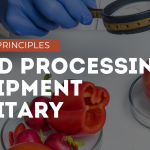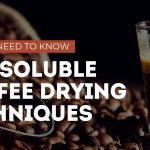Introduction: Understanding Drum Dryers in Context
Drum dryers represent a significant segment of industrial drying technology, widely used across food processing, chemical manufacturing, pharmaceutical production, and waste treatment industries. These robust systems excel at processing viscous materials and slurries by applying them to heated rotating drums that rapidly evaporate moisture. While drum dryers offer notable benefits including continuous operation capabilities and effective handling of high-viscosity products, they also present several limitations that can impact operational efficiency, product quality, and overall cost-effectiveness.
This article examines the disadvantages of drum dryers to provide engineers, plant managers, and decision-makers with a balanced perspective when evaluating drying technologies for their specific applications. Understanding these limitations is crucial for making informed equipment investments and implementing effective mitigation strategies to optimize drying operations.
Key Limitations of Drum Drying Technology
Heat Sensitivity Issues and Product Degradation Concerns
One of the most significant disadvantages of drum dryers lies in their high-temperature operation. The direct contact between the product and the heated drum surface (typically 120-170°C) can cause:
- Thermal degradation of heat-sensitive compounds
- Loss of volatile flavors and aromas in food products
- Diminished nutritional value through vitamin destruction
- Potential protein denaturation
- Color changes and browning reactions
For products containing thermolabile ingredients, these high-temperature conditions may render drum drying unsuitable without significant formulation modifications. Heat-sensitive materials often experience substantial quality degradation, limiting the applicability of drum dryers for pharmaceuticals, certain food products, and specialty chemicals that require gentler processing conditions.
Surface Area Limitations Compared to Alternative Drying Methods
Drum dryers face inherent constraints regarding available drying surface area:
- Limited surface-to-volume ratio compared to spray dryers or fluid bed systems
- Restricted heat transfer capacity due to finite drum dimensions
- Scaling limitations when production volumes increase
- Potential throughput bottlenecks during peak production periods
Unlike technologies like spray drying, which atomizes product into millions of droplets with massive combined surface area, drum dryers rely solely on the cylindrical drum surface for evaporation. This fundamental constraint can result in lower production rates for equivalent equipment footprints and energy inputs.
Energy Efficiency Challenges and Thermal Loss Problems
Drum dryers frequently encounter energy efficiency issues that impact operational costs:
- Significant thermal losses through radiation from the drum surface
- Heat wastage during startup and shutdown phases
- Inefficient heat transfer for certain product types
- Higher energy consumption per unit of water removed compared to some alternative technologies
- Challenges in heat recovery implementation
The thermal efficiency of drum dryers typically ranges from 50-70%, lower than some competing technologies. Given rising energy costs and sustainability concerns, these efficiency challenges represent a substantial disadvantage in modern processing environments.
Product Consistency and Quality Control Difficulties
Maintaining consistent product quality presents ongoing challenges with drum drying systems:
- Variable residence time depending on drum rotation speed
- Uneven product film formation on the drum surface
- Potential for inconsistent moisture content in the final product
- Difficult real-time monitoring of product parameters
- Challenges in achieving uniform thickness across the drum width
These consistency issues can lead to batch variations, quality control problems, and potential product rejections—particularly problematic in industries with strict quality specifications like pharmaceuticals and premium food products.
Installation and Maintenance Cost Considerations
The economic impact of drum dryer disadvantages extends to capital and operational expenditures:
- High initial equipment investment costs
- Expensive wear components (drums, scraper blades)
- Regular maintenance requirements for bearings and drive systems
- Specialized skills needed for effective maintenance
- Production losses during maintenance downtime
Compared to simpler drying technologies, drum dryers often present higher lifetime operational costs that must be carefully evaluated against their benefits for specific applications.
Space and Footprint Requirements
Drum dryers present spatial challenges in processing facilities:
- Large physical footprint for the equipment
- Additional space needed for ancillary systems
- Height requirements for larger units
- Floor load considerations due to equipment weight
- Space inefficiency for certain production volumes
In facilities with limited available space, these dimensional requirements can present significant implementation barriers or require costly facility modifications.
Operational Challenges in Day-to-Day Usage
Several practical operational disadvantages affect drum dryer efficiency:
- Extended startup times to reach optimal operating temperatures
- Complex cleaning procedures between product changeovers
- Difficult access to certain components for maintenance
- Potential product buildup on scraper blades
- Challenges in fine-tuning operating parameters
These day-to-day operational issues can reduce effective production time, increase labor costs, and create process management complexities not present with alternative drying systems.
Limited Product Versatility for Certain Material Types
Drum dryers demonstrate inherent limitations regarding the types of products they can effectively process:
- Poor handling of non-viscous, low-solids materials
- Challenges with abrasive or highly fibrous products
- Difficulties with materials that tend to stick or foul surfaces
- Limited applicability for heat-sensitive biologically active compounds
- Unsuitability for products requiring controlled atmosphere processing
These material compatibility restrictions significantly narrow the application range of drum dryers compared to more versatile drying technologies.
Noise and Heat Emissions in the Working Environment
Workplace conditions around drum dryers present additional disadvantages:
- Elevated noise levels from mechanical components and steam systems
- Heat radiation creating challenging working conditions
- Potential steam leakage creating humidity issues
- Vibration concerns with larger units
- Personnel safety considerations due to hot surfaces
These environmental factors can impact worker comfort, safety compliance requirements, and overall operational efficiency.
Industry-Specific Impact of Drum Dryer Disadvantages
Food Processing Limitations
In food applications, drum dryer disadvantages manifest uniquely:
- Dairy Processing: Potential protein denaturation and flavor changes in milk powders; browning reactions affecting appearance
- Fruit and Vegetable Products: Loss of heat-sensitive nutrients; color changes; potential for scorched flavors
- Cereal and Grain Applications: Starch modification affecting functionality; limitations in textural control
Chemical Manufacturing Constraints
Chemical producers face several drum dryer challenges:
- Temperature sensitivity issues with reactive compounds
- Limited control over particle characteristics
- Residence time variability affecting reaction completion
- Challenges with materials prone to fouling heat transfer surfaces
- Safety considerations with volatile or flammable materials
Pharmaceutical Application Barriers
The pharmaceutical sector encounters significant limitations:
- Potential degradation of active pharmaceutical ingredients
- Challenges meeting GMP requirements for cleanability
- Difficulties achieving consistent particle properties
- Limited containment options for potent compounds
- Validation challenges due to process variability
Waste Treatment Process Complications
Waste processing operations face unique disadvantages:
- Fouling issues with variable waste compositions
- Limited ability to handle fluctuating input characteristics
- Potential for volatile organic compound (VOC) emissions
- Energy intensity concerns for large-volume operations
- Maintenance challenges in harsh processing environments
Comparative Analysis: Drum Dryers vs. Alternative Technologies
Drum Dryers vs. Spray Dryers
| Parameter | Drum Dryers | Spray Dryers | Relative Disadvantage |
|---|---|---|---|
| Heat sensitivity accommodation | Limited – direct contact heating | Better – controlled droplet drying | Major disadvantage |
| Particle size control | Poor – mechanical flaking | Excellent – adjustable atomization | Significant disadvantage |
| Energy efficiency | Moderate (50-70%) | Higher (up to 80%) | Moderate disadvantage |
| Product versatility | Limited to viscous/paste materials | Wide range of liquid products | Major disadvantage |
| Capital investment | Moderate to high | High | Minor advantage |
| Throughput capacity | Lower | Higher | Moderate disadvantage |
Drum Dryers vs. Freeze Dryers
| Parameter | Drum Dryers | Freeze Dryers | Relative Disadvantage |
|---|---|---|---|
| Product quality preservation | Poor for heat-sensitive materials | Excellent – minimal degradation | Major disadvantage |
| Energy consumption | Moderate | Very high | Significant advantage |
| Processing time | Fast | Very slow | Major advantage |
| Initial investment | Moderate | Very high | Significant advantage |
| Operating costs | Moderate | High | Moderate advantage |
| Product versatility | Limited | Excellent for heat-sensitive materials | Significant disadvantage |
Drum Dryers vs. Fluid Bed Dryers
| Parameter | Drum Dryers | Fluid Bed Dryers | Relative Disadvantage |
|---|---|---|---|
| Material handling | Limited to pastes/slurries | Better for granular/particulate | Significant disadvantage |
| Heat transfer efficiency | Moderate | Higher | Moderate disadvantage |
| Process control | Limited | Excellent | Significant disadvantage |
| Cleaning/changeover | Challenging | Generally easier | Moderate disadvantage |
| Footprint efficiency | Lower | Higher | Moderate disadvantage |
| Initial investment | Moderate | Moderate to high | Comparable |
Drum Dryers vs. Belt Dryers
| Parameter | Drum Dryers | Belt Dryers | Relative Disadvantage |
|---|---|---|---|
| Product format flexibility | Limited | Excellent | Significant disadvantage |
| Temperature profile control | Poor – single point | Excellent – zoned drying | Major disadvantage |
| Cleaning accessibility | Challenging | Generally better | Moderate disadvantage |
| Throughput scaling | Limited by drum size | More linear scaling | Moderate disadvantage |
| Energy efficiency | Moderate | Moderate to high | Slight disadvantage |
| Capital cost | Moderate | High | Slight advantage |
Mitigating Drum Dryer Disadvantages
Despite their limitations, several strategies can minimize drum dryer disadvantages:
- Enhanced Heat Transfer Systems: Implementing improved steam systems and drum surface materials to maximize thermal efficiency
- Advanced Control Automation: Utilizing precision controls and sensors for better process parameter management
- Product Formulation Modifications: Adjusting feed compositions to improve drying characteristics
- Hybrid System Integration: Combining drum drying with complementary technologies for optimized processing
- Mechanical Design Improvements: Implementing enhanced scraper systems and feeding mechanisms
- Heat Recovery Implementation: Capturing and reusing waste heat streams to improve energy efficiency
- Preventive Maintenance Programs: Establishing rigorous maintenance schedules to minimize downtime
When Drum Dryers May Not Be the Optimal Choice
Despite mitigation strategies, certain scenarios strongly favor alternative technologies:
- When processing extremely heat-sensitive compounds with significant degradation potential
- For applications requiring precise particle size distribution control
- When product versatility and frequent changeovers are primary requirements
- In facilities with severe space limitations or weight restrictions
- For very low-viscosity products with minimal solids content
- When energy efficiency is the paramount selection criterion
- In applications requiring highly controlled atmosphere conditions
Recent Technological Advancements Addressing Traditional Limitations
The drum drying industry continues to evolve with innovations addressing historical disadvantages:
- Development of modified drum surface materials improving release properties
- Integration of advanced infrared preheating systems reducing overall energy consumption
- Implementation of precision application systems for more uniform film formation
- Introduction of modular designs allowing more flexible installation options
- Development of enhanced clean-in-place systems reducing changeover times
- Integration of advanced process analytical technology (PAT) for real-time quality monitoring
Decision Framework: Evaluating Drum Dryers Despite Their Disadvantages
When determining whether drum dryers remain suitable despite their limitations, consider this structured evaluation approach:
- Product Characteristics Assessment:
- Heat sensitivity profile of key ingredients
- Viscosity range and solids content
- Required final product format and characteristics
- Process Requirements Evaluation:
- Required throughput capacity
- Batch vs. continuous processing needs
- Changeover frequency expectations
- Facility Constraints Analysis:
- Available space dimensions and configuration
- Utility availability (steam, electricity)
- Environmental conditions and requirements
- Economic Factors Consideration:
- Capital investment limitations
- Operational cost sensitivity
- Expected equipment service life
- Regulatory and Quality Requirements:
- Product quality specifications
- Compliance requirements
- Validation needs
Key Questions to Ask Suppliers About Drum Dryer Limitations
When engaging with equipment suppliers, these targeted questions can help address common disadvantages:
- What specific design features does your drum dryer implement to minimize thermal damage to heat-sensitive products?
- How does your equipment address energy efficiency concerns, and what is the typical energy consumption per kg of water removed?
- What cleanability features are incorporated to reduce changeover times and improve operational efficiency?
- What control systems are included to ensure consistent product quality despite the inherent variability in drum drying?
- How does your drum dryer compare to alternative technologies for our specific application, and what advantages might offset the known limitations?
- What preventive maintenance requirements should we anticipate, and how do they impact operational availability?
- What recent technological improvements have you implemented to address traditional drum dryer disadvantages?
- How scalable is your system if our production requirements increase in the future?
Conclusion: Balancing Drum Dryer Limitations Against Benefits
While drum dryers present several significant disadvantages ranging from heat sensitivity concerns to operational challenges, they remain valuable tools in the industrial drying landscape for specific applications. By thoroughly understanding these limitations and implementing appropriate mitigation strategies, processors can make informed decisions regarding whether drum drying technology aligns with their specific requirements.
The key to successful implementation lies in carefully weighing these disadvantages against the technology’s strengths, considering application-specific factors, and potentially exploring hybrid solutions that leverage complementary drying technologies to overcome inherent limitations.
As drum dryer technology continues to evolve, ongoing innovations promise to address many traditional disadvantages, potentially expanding the technology’s application range and improving its overall value proposition for industrial drying operations.




